
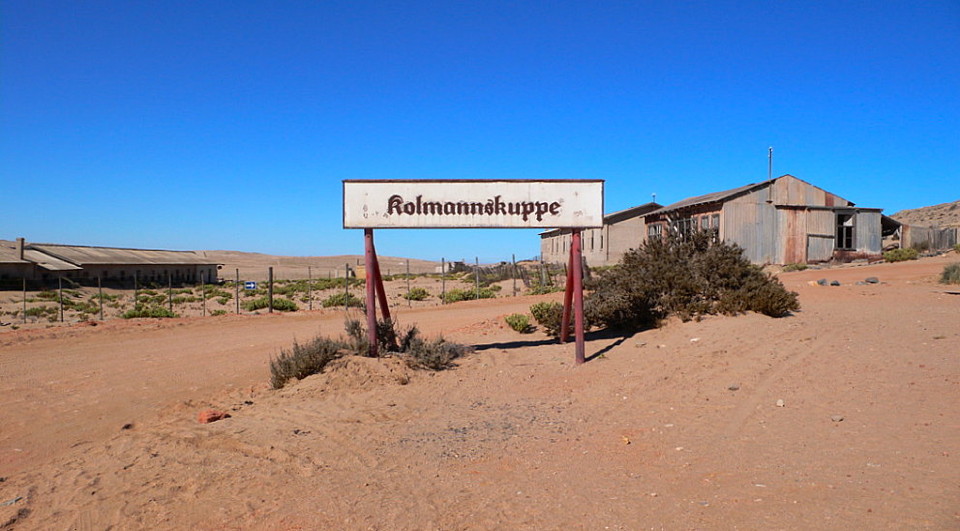
About Andrew Cusack
 Writer, web designer, etc.; born in New York; educated in Argentina, Scotland, and South Africa; now based in London.
Writer, web designer, etc.; born in New York; educated in Argentina, Scotland, and South Africa; now based in London. read more
News
Blogs
Reviews & Periodicals
Arts & Design
World
France
Mitteleuropa
Knickerbockers
Argentina
The Levant
Africa
Cape of Good Hope
Netherlands
Scandinavia
Québec
India
Muscovy
Germany
Academica
Kolmanskop
Ghost town of the Namib
NAMIBIA IS A LAND that fascinates me, which is perhaps surprising. This arid land is sparsely populated — just 6.6 people per square mile — but its deserts are believed to be the oldest in the world. Those who haven’t experienced its harsh beauty may wonder why this land has attracted its odd and varied collection of peoples, but here the Ovambo, the Kavango, the Herero, the Afrikaner, the German, and the Bushman all call home.
I have already written somewhat about Lüderitz and beyond it the Diaz Point. As you speed down the B4 from Keetmanshoop to Lüderitz — a four-hour drive passing through just the one small village of Aus — you can turn off just before you reach the coastal town and pay a visit to the eerily ghost town of Kolmanskop: Kolmannskuppe in the original German.
Legend has it that when the Lüderitz railways was being built, a worker named Zacharias Lewala stumbled upon a rough diamond and brought it to his supervisor August Stauch saying “Look mister, mooi klip!” (using the Afrikaans for ‘beautiful stone’). The Namibian diamond rush began soon after, and Kolmannskuppe was founded to house workers and managers for the diamond company in the German colony, which was transferred to South Africa as a mandate territory by the League of Nations in 1919.
The abundance of the diamond deposits enriched Lüderitz and its little neighbour Kolmanskop, and the tiny village soon had its own small hospital, a sports hall and theatre, ice factory, and even the first x-ray machine in the southern hemisphere — all this is a strange tropical take on the Wilhelmine architecture of their native Germany. At its peak, there were a few hundred people living in Kolmanskop but the nearby strain of alluvial deposits began to be exhausted after the First World War, and by the mid 1950s the village was abandoned.
Slowly, day by day, week by week, year upon year, the desert began to claim back what was hers, and the curious edifices erected by the German settlers was left exposed to the harsh elements. The abandoned homes were reconquered by the relentless shifting sands, and the once-rich diamond town became the ghost town of the Namib. It’s a haunting place to see. NamDeb, the mining company which still owns Kolmanskop, has wisely restored only one or two buildings, leaving the rest in the splendour of their scenic ruin, a monument perhaps to the harshness of the land and the expended wealth that justified the town’s existence.

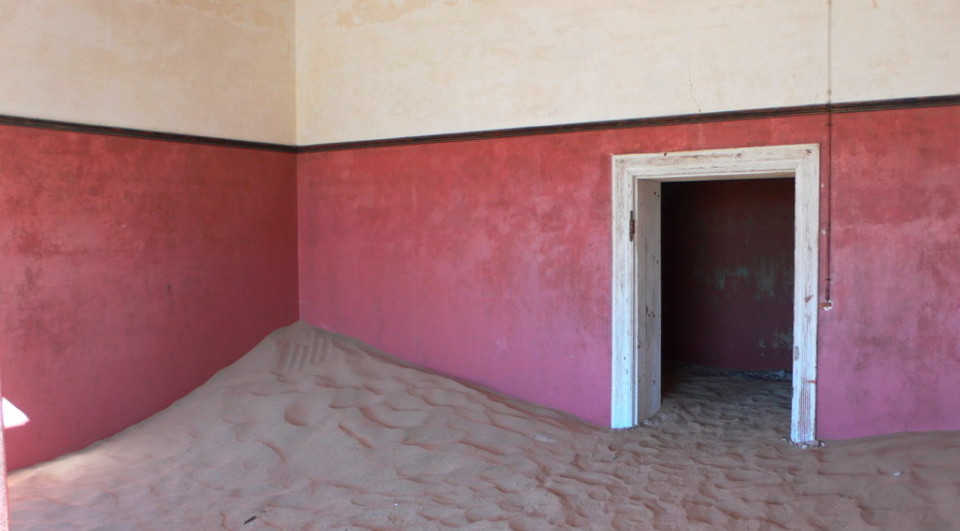
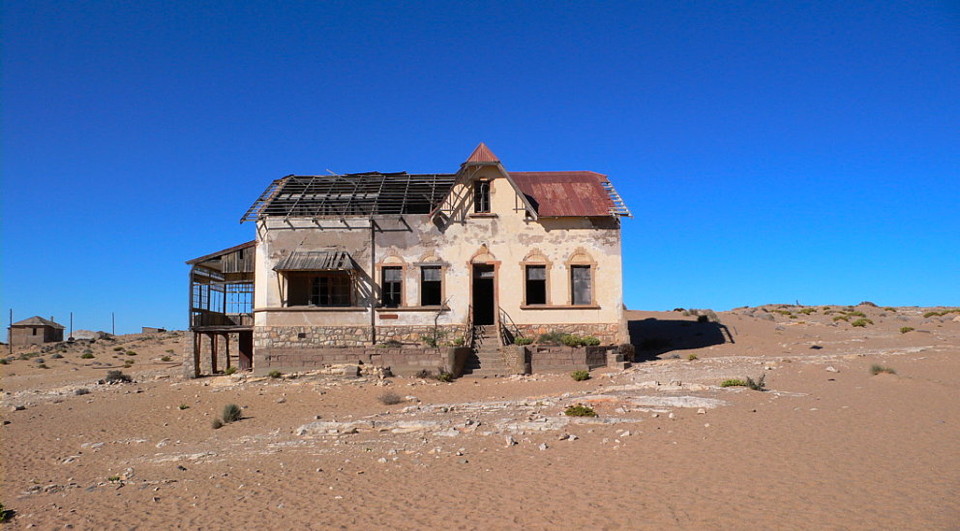
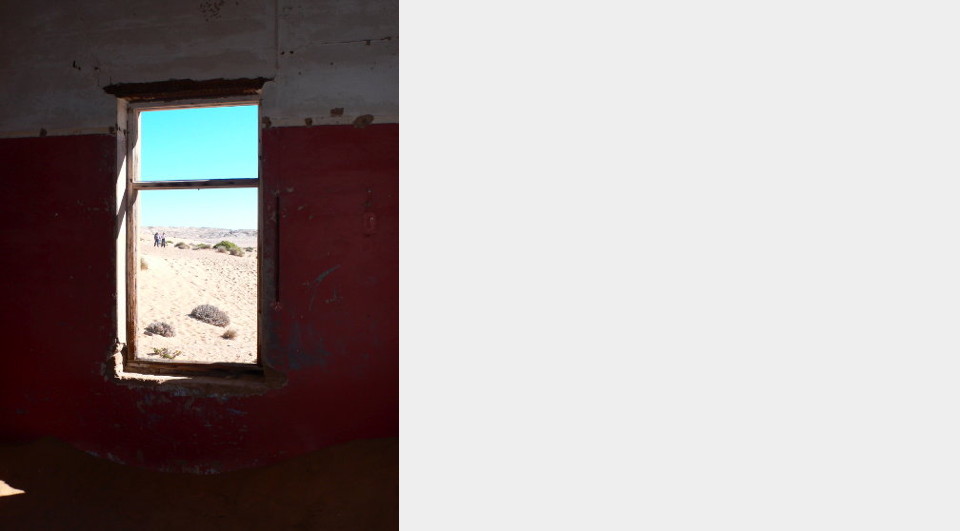
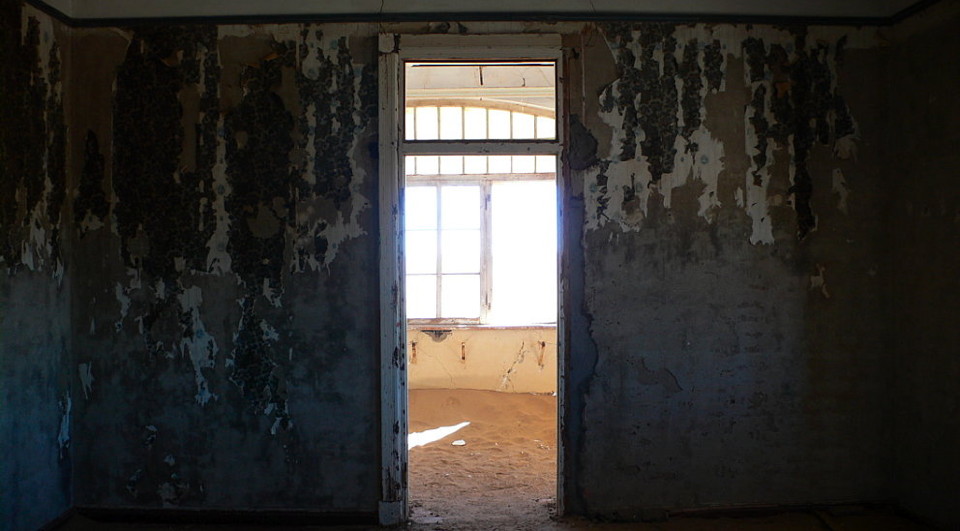
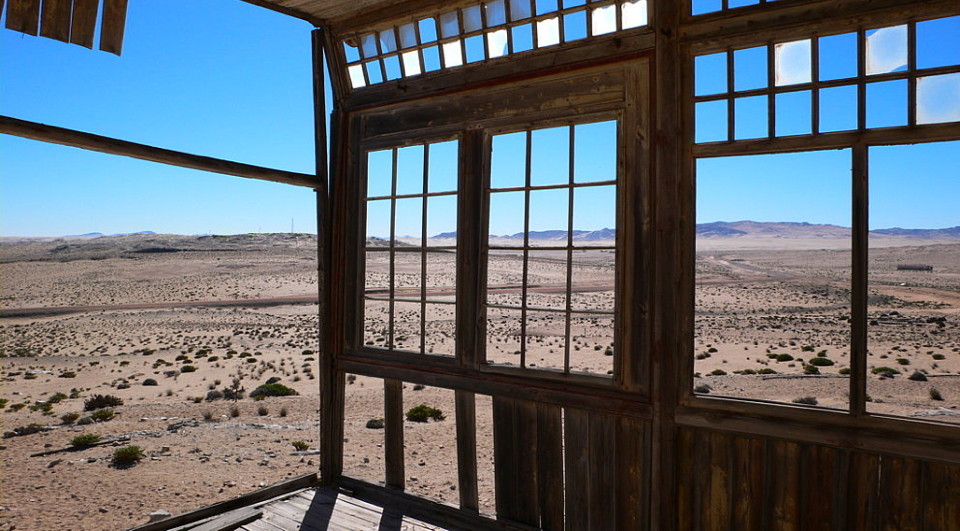
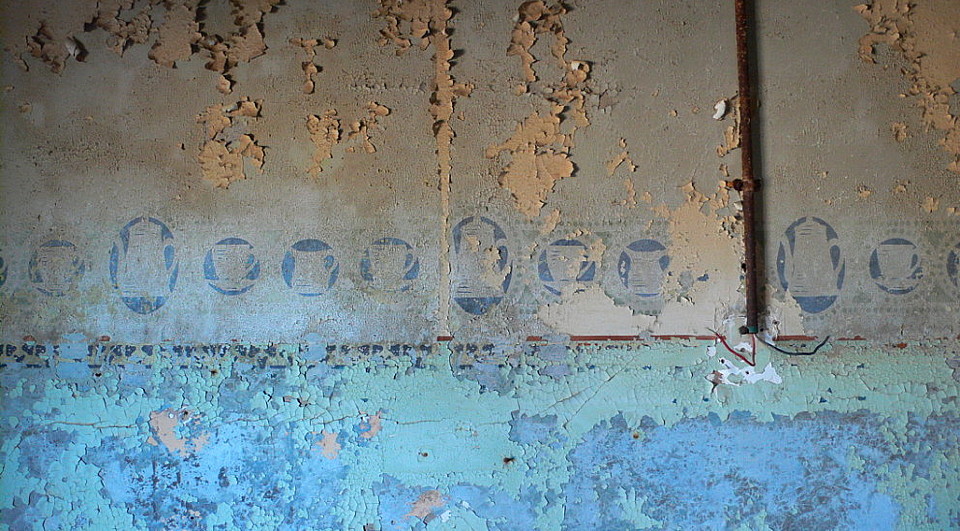
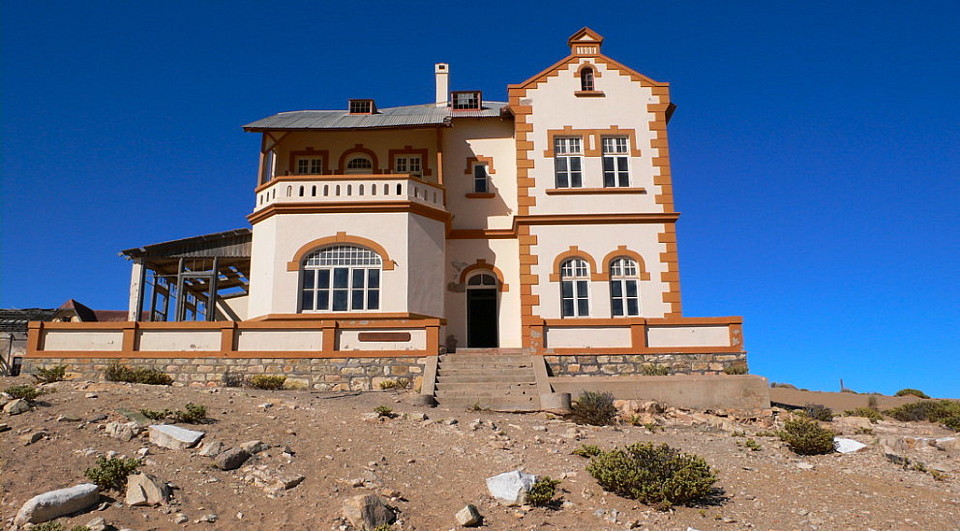
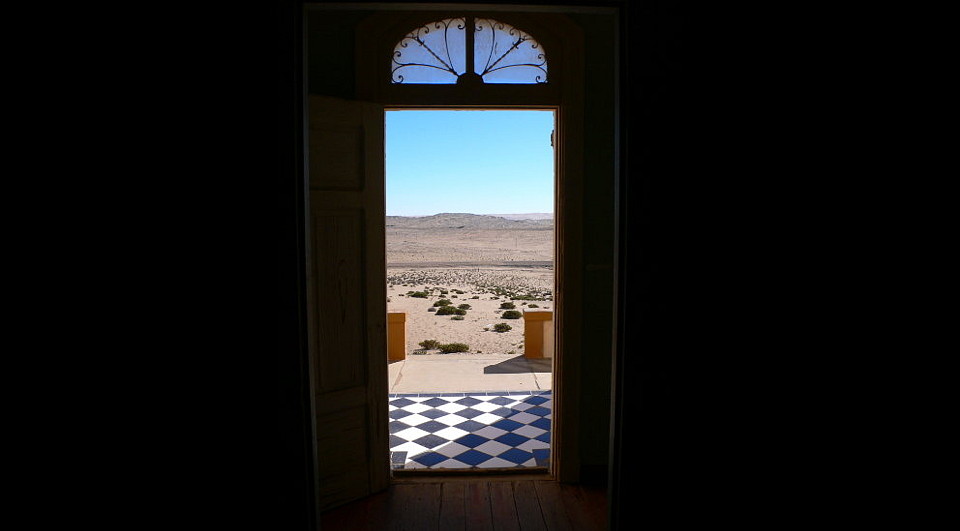
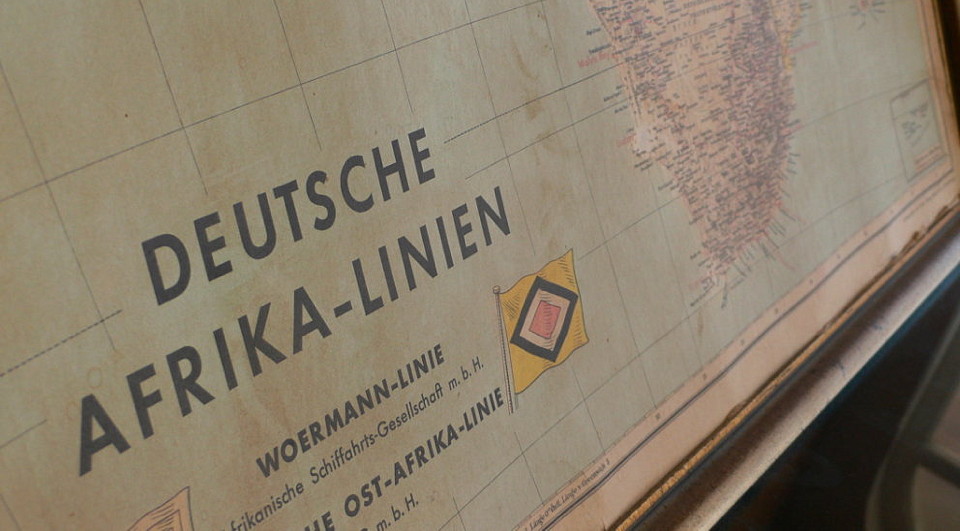
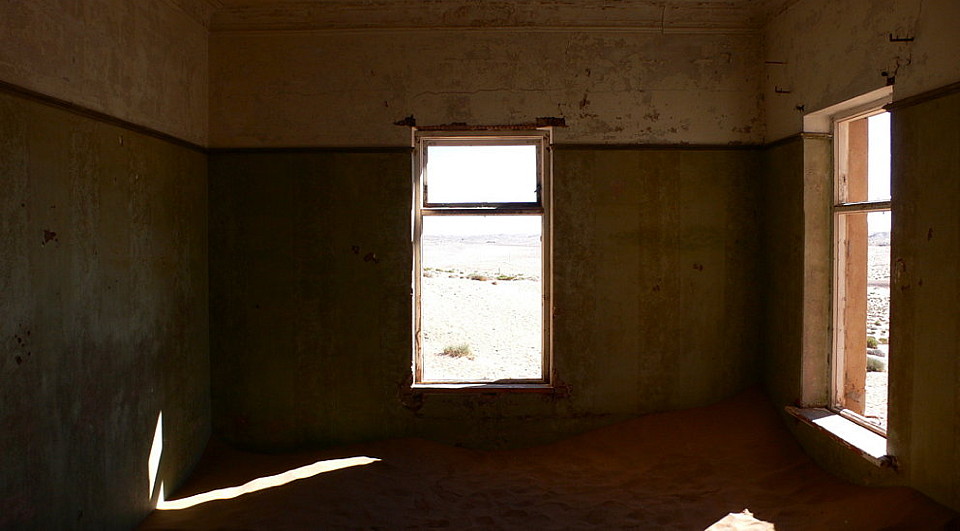

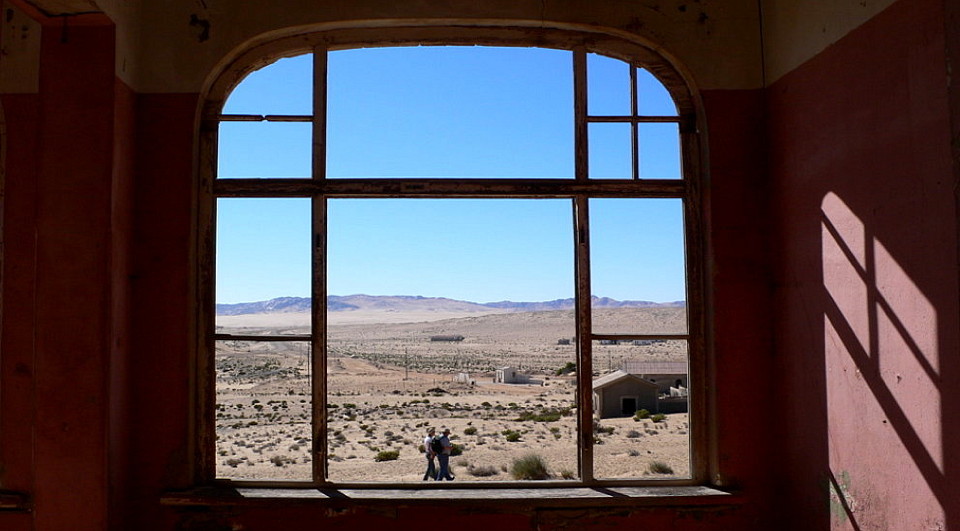
Search
Instagram: @andcusack
Click here for my Instagram photos.Most Recent Posts
- Faithful Shepherd of the Falklands April 8, 2025
- Articles of Note: 8 April 2025 April 8, 2025
- Proportionality Destroys Representation April 8, 2025
- Sag Harbor Cinema March 26, 2025
- Teutonic Takeover March 10, 2025
Most Recent Comments
Book Wishlist
Monthly Archives
Categories



Namibia is certainly a fascinating land.It is also interesting that the German minority have retained their cultural identity and have not merged with the Afrikaners. Sadly on Christmas day 2013 SWAPO zealots arranged for the German rider statue to be demolished in Windhuk ironically using Chinese labour. A little bit of history destroyed for the purity of the Marxist message.